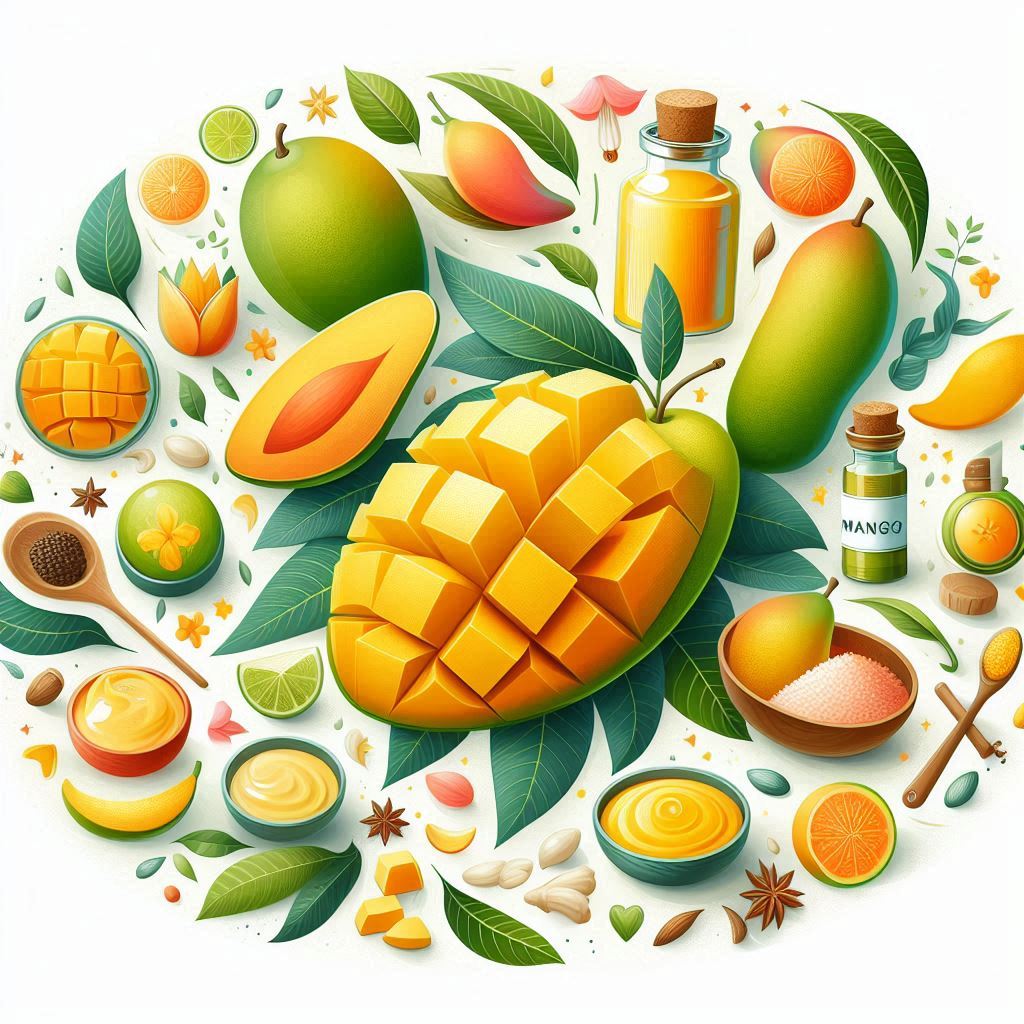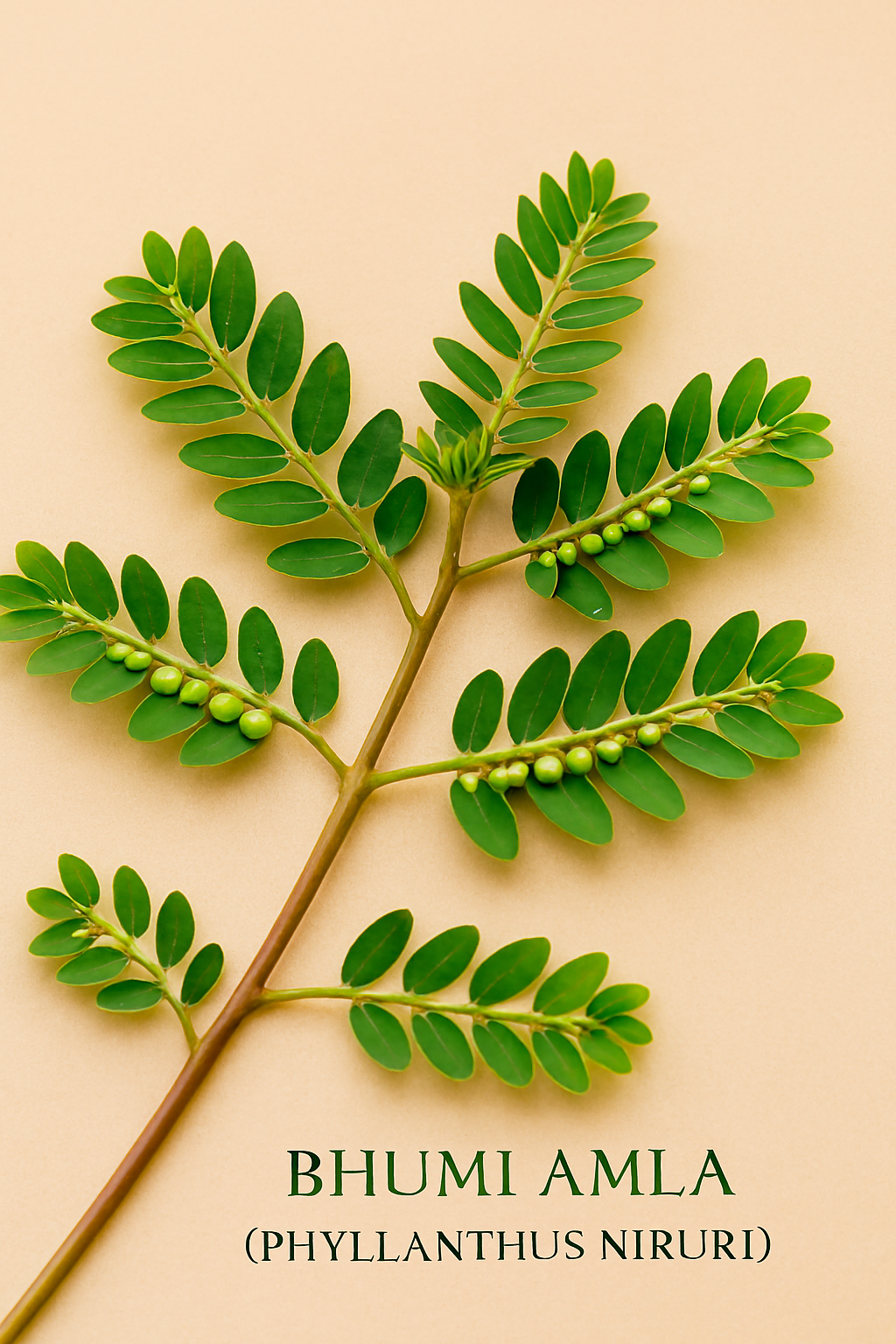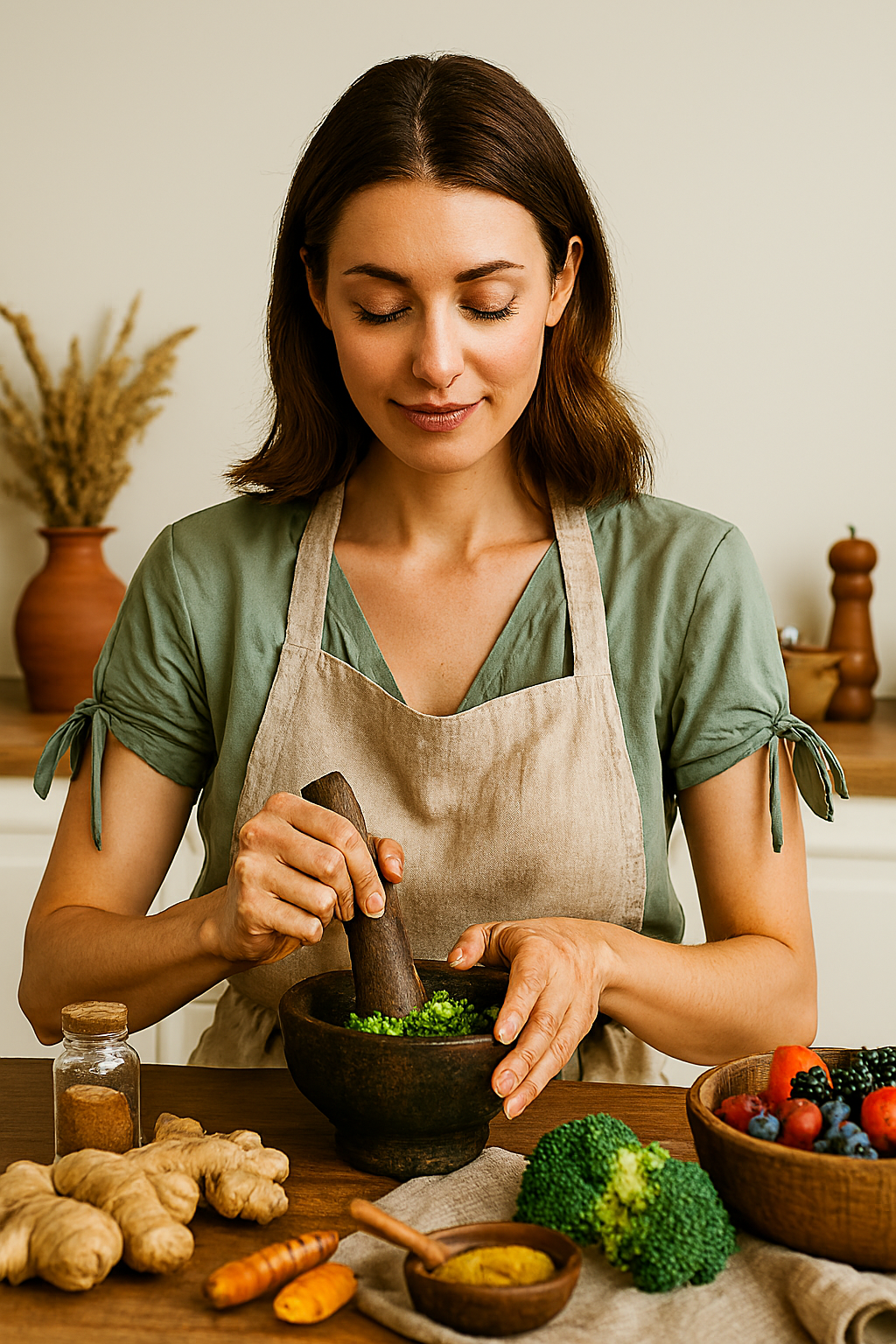Celebrated as the “King of Fruits,” mango (Mangifera indica) is prized not only for its sweet taste but also for its extensive medicinal benefits in Ayurveda. Every part of the tree—fruit, leaves, bark, flowers and seed kernel—carries unique healing properties that balance the doshas, strengthen digestion, support immunity and ease inflammation.
Ayurvedic Profile of Mango
- Rasa (taste) Fruit: madhura (sweet) | Bark & seed: kashaya (astringent)
- Guna (qualities) Laghu (light), Snigdha (unctuous)
- Veerya (potency) Sheeta (cooling)
- Vipaka (post-digestive) Katu (pungent)
- Dosha action Ripe fruit calms Vata; bark, leaves and seed pacify Kapha-Pitta.
Vernacular & Sanskrit Names
| Language | Name |
|---|---|
| Hindi | Aam |
| Tamil | Maambalam |
| Telugu | Maamidi |
| Sanskrit synonyms | Amra, Rasala, Sahakara, Keereshta (and 20 + more poetic epithets) |
Common Mango Varieties & Their Ayurvedic Actions
| Variety | Dosha effect | Key actions |
|---|---|---|
| Alphonso (Hapus) | ↓ Vata-Pitta, ↑ Kapha (mild) | Aphrodisiac, cardiotonic, antioxidant |
| Dasheri | ↓ Vata, slight ↑ Kapha-Pitta | Appetite stimulant, anti-inflammatory |
| Langra | ↓ Vata-Kapha | Complexion enhancer, digestive |
| Banganapalli | ↓ Vata, ↑ Kapha (mild) | Energy booster, hepatoprotective |
| Kesar | ↓ Vata-Pitta | Rejuvenative, skin tonic |
| Raw mango (Kairi) | ↑ Vata-Pitta | Carminative, antimicrobial (use sparingly) |
Medicinal Uses of Each Part of the Mango Tree
1. Fruit: Sweet vs. Sour
- Sweet, ripe mango – Brimhana (nourishing), Vataghna, fertility tonic, complexion booster.
- Sour, unripe mango – Stimulates Agni but can aggravate Pitta/Kapha; good in small amounts as chutney or amchur.
2. Leaves
- Powder 1–3 g or juice 5–10 ml daily supports blood-sugar control, respiratory health and wound healing.
3. Stem bark
- Decoction 25–50 ml or powder 3–5 g for diarrhea, bleeding gums, uterine bleeding; strong astringent.
4. Flowers
- Cool, absorbent; powder 1–3 g for diarrhea, urinary tract irritation, skin eruptions.
5. Seed kernel
- Powder 1–3 g treats intestinal worms, chronic dysentery, acid reflux; included in classic formulas like Patrangasava and Brihat Gangadhar Churna.
6. Mango oil (from seed or skin)
- Topical: speeds wound closure, stops bleeding, soothes dermatitis.
- Oral gargle: relieves ulcers, bad breath.
Therapeutic Spice: Amchur Powder
Sun-dried green mango powder is sour, sweet & astringent:
- Kindles digestion, eases gas and bloating.
- Balances Kapha-Vata when paired with cumin or ginger.
- ¼–½ tsp in soups, sprouts or lentils.
Classic Ayurvedic Formulas Containing Mango
| Medicine | Mango part | Main indication |
|---|---|---|
| Katakakhadiradi Kashayam | Seed | Diabetes |
| Nyagrodhadi Churna | Fruit & bark | Urinary disorders |
| Patrangasava | Seed kernel | Menorrhagia, leucorrhea |
| Brihat Gangadhar Churna | Seed | Chronic diarrhea |
Potential Side-Effects & How to Balance Them
| Overuse of | Possible issue | Counter-remedy |
|---|---|---|
| Sour mango / amchur | Acid reflux, skin rashes, constipation | Sip ginger-cumin water; add Sauvarchala Lavana (black salt) |
| Excess ripe mango | Heaviness, Kapha congestion | Combine with a pinch of trikatu or walk after eating |
Moderation plus warming spices keeps the medicinal benefits of mango while preventing Agni dullness.
From delicious pulp to potent seed kernel, mango offers a pharmacy on a tree. When used wisely—seasonally ripe fruit for nourishment, bark for astringency, leaves for sugar balance—this royal fruit becomes a versatile Ayurvedic ally for digestion, immunity, skin health and metabolic wellness. Enjoy mango’s sweetness, but respect its power: dose carefully, spice mindfully and savour the vibrant health it bestows.




